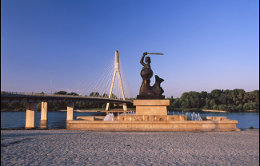
Warsaw
You will see the most important sites in Warsaw: OldTown with Royal Castle, Market Square and Barbican, New Town, Monument of Warsaw Uprising, Royal Road with magnificent palaces, churches and monuments, icluding Presidential Palace, Warsaw University, Holy Cross Church with Chopin’s heart, Copernicus Statue, Area of former Jewish Ghetto with monument of Ghetto Heros, Grand Theater and National Opera Building, Unknown Soldier Tomb and Lazienki Royal Park with Palace on the Water and Chopin Monument.
Jewish
Tour
You will see the former Jewish District: The Nożyk Synagogue,
Jewish Cemetery, Monument of Ghetto Heros, Umschlagplatz, fragments of
Ghetto wall and many other places.
Warsaw
Communism Tour
A journey into the more and more distant times of communism, its social
and culture trends. An attempt at moving back in time by means of the
still functioning relics of the past. Muranów, the Palace of
Culture and Science, Marszałkowska street, the Constitution Square, the
Haller Square – all designed in the socialism realism style.
The programme of the tour includes a visit in a milk bar and other
attractions. The standard sightseeing tour takes 3 hours. Available as
a walking tour, a limousine/van tour or in an original Polish car from
the times of communism!
Warsaw
by night
Visits in the best and most trendy nightclubs in the city under a
professional party supervision. The standard tour takes 3 hours and at
the end the guests choose a club to spend the rest of the night in.
Available as a walking tour or limousine/van tour.
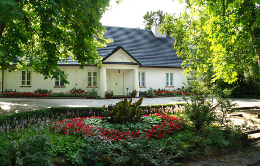
Following the footsteps of Fryderyk Chopin
Visits the most interesting sites from the greatest Polish composer’s life: Chopin Museum, Holy Cross Church with the Chopin’s heart, Chopin Monument in the Royal Lazienki Park, The Manor in Żelazowa Wola – the composer’s birth place (about 50 km from Warsaw), Brochów – 16th–century church where Chopin’s parents were married and Chopin was baptised. We also propose you a short walk in the romantic Masovian English-French style gardens in Arkadia and visit the Palace in Nieborów.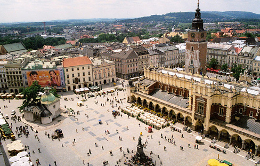
Cracow and Auschwitz - Birkenau
Cracow – UNESCO World Heritage Site is one of the most
important historical and culture centers of Europe. City of over
1000-year-long history was a capital of Poland for few centuries. You
will visit: Market Square – largest square in Europe with
gothic Our Lady Church and renaisance Cloth Hall, Jagiellonian
University, Old City Walls and former Jewish Quarter in Kazimierz. The
highlight of this tour will be sightseeing of Wawel Royal Castle and
Cathedral – former seat of Polish monarchs.
Auschwitz – Birkenau, the largest Nazi
concentration camp during World War II. See the horryfing gas chambers,
barracks, crematorium and other facilities.
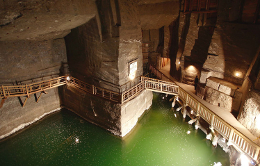
Cracow – Wieliczka Salt Mine
This tour
includes all the programming of Cracow Tour plus visit to Wieliczka
Salt Mine. The “Wieliczka” Salt Mine is one of the
most valuable monuments of material and spiritual culture in Poland.
Each year it is visited by more than one million tourists from all over
the world.
It is also a world class monument, featuring among twelve objects on
the UNESCO’s World Cultural and Natural Heritage List.
Today, the “Wieliczka” Salt Mine combines many
centuries of tradition and modernity, the history of several hundred
years and an underground metropolis with extensive infrastructure.
The mine is a product of work of tens of generations of miners, a
monument to the history of Poland and to the Polish nation –
a brand, present in Polish consciousness for centuries.
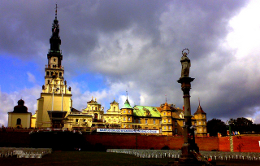
Czestochowa
Czestochowa – the most important shrine of Catholic religion
in Poland. The Monastery of Jasna Gora is home to the miraculous "Black
Madonna", a Gothic painting of Our Lady. The mysterious image helped to
make Czestochowa one of the most important pilgrimage destinations in
the world - right after Rome, Lourdes and Fatima. Our visit to the
monastery includes the Miraculous Picture Chapel and the Basilica.
Also, you can visit the 600th-Anniversary Museum, the Arsenal and the
Treasury by yourself..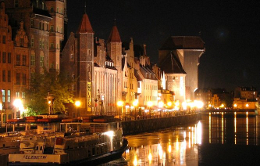
Malbork - Gdansk
Gdansk is a historic port with magnificent gothic an Duch architecture. You will see largest brick church in the world, beautiful City Hall and Artus Court, and OldPort Crane. Enjoy an organ music concert in Oliwa Cathedral and walk along the longest pier in Europe in Sopot. Next you will visit to Malbork Castle, famous fortress of Teutonic Knights Order. this is the largest gothic castle in the world. An amazing complex of walls, towers, a labirynth of chambers and dungeons.
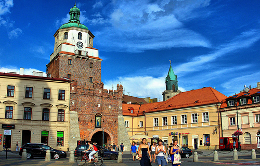
Lublin and Majdanek
Lublin is the biggest Polish city on the eastern side of the Vistula River, and it has a lot to offer its visitors. You will have an opportunity to see the Old Town with its impressive Krakow Gate dating back to the 14th century, the Town Hall, the Dominican church and monastery founded in the 13th century - and all of these representing a variety of historical architectural styles. One of the highlights of your sightseeing tour will be the Cathedral with its Acoustic Sacristy Chamber and Treasury. One of the most important historical artefacts to be found in Lublin is the priceless set of Russo-Byzantine frescoes in the Holy Trinity Chapel, located within the fortified walls of Lublin Castle. Next you will see the extermination camp on the outskirts of the city, in Majdanek. This was the second largest Nazi camp in Europe after Auschwitz and here people of around 50 nationalities were imprisoned. The camp operated from October 1, 1941 until July 22, 1944, when it was captured nearly intact by the advancing Soviet Red Army. Although conceived as a forced labor camp and not as an extermination camp, over 79,000 people died there (59,000 of them Polish Jews) during the 34 months of its operation. The name 'Majdanek' ("little Majdan") derives from the nearby Majdan Tatarski ("Tartar Maidan") district of Lublin, and was given to the camp in 1941 by the locals, who were aware of its existence. For reasons initially related to its funding, Majdanek was officially "Prisoner of War Camp of the Waffen-SS in Lublin" from October 1, 1941 until February 16, 1943, when it officially became "Konzentrationslager Lublin" (Concentration Camp Lublin).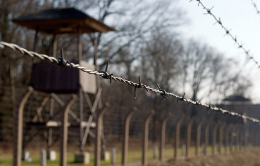
Treblinka
The extermination camp at Treblinka in which hundreds of thousands of Jews were murdered was built in the spring of 1942 near an existing penal labour camp and covered an area of 17 hectares. The camp was surrounded by a high barbed wire fence camouflaged with interwoven greenery to hide what was happening inside. Anti-tank obstacles and rolls of barbed wire were placed outside the fence. Watch towers were additionally positioned around the camp.
The first
railway transports of victims destined for
destruction arrived at the Treblinka camp on June 22, 1942, and from
that time
there was a constant stream of fresh arrivals.
Treblinka was in reality a place of mass execution - a death camp like
Auschwitz. After New Year, 1943, the number of transports began to
diminish. In
February or March, 1943, Himmler visited Treblinka, and the eradication
of all
traces of the crimes by wholesale burning of corpses began.
It has been estimated that about 850,000 people were killed here - Jews
from
occupied Poland, Czechoslovakia, France, Greece, Yugoslavia and the
USSR, as
well as from Germany and Austria. Polish and German Gypsies were also
sent to
Treblinka.
Treblinka was finally closed in November, 1943.
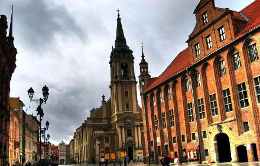
Torun - city of Copernicus
A Pearl of Northern Gothic – this is the second name of the city. Though not as renowned as Krakow, Torun still equals it in terms of beauty and magic. An experienced guide will show you not only the most important monuments, but also all of the little details without which you would not feel the atmosphere of the city fully. Our Torun city walk includes the Old Town area, where you will have an opportunity to see the Town Hall, which is a superb monument of the Medieval Burgher architecture of Europe. The next highlights are Artus Court, the Church of the Holy Spirit, Copernicus’ House, the Slanting Tower, the Bridge Gate, the Monument to Nicholas Copernicus, Under the Star House, St. Johns’ Cathedral, and the Copernicus House. If you visit Torun, don’t forget to taste some of its delicious gingerbread!
